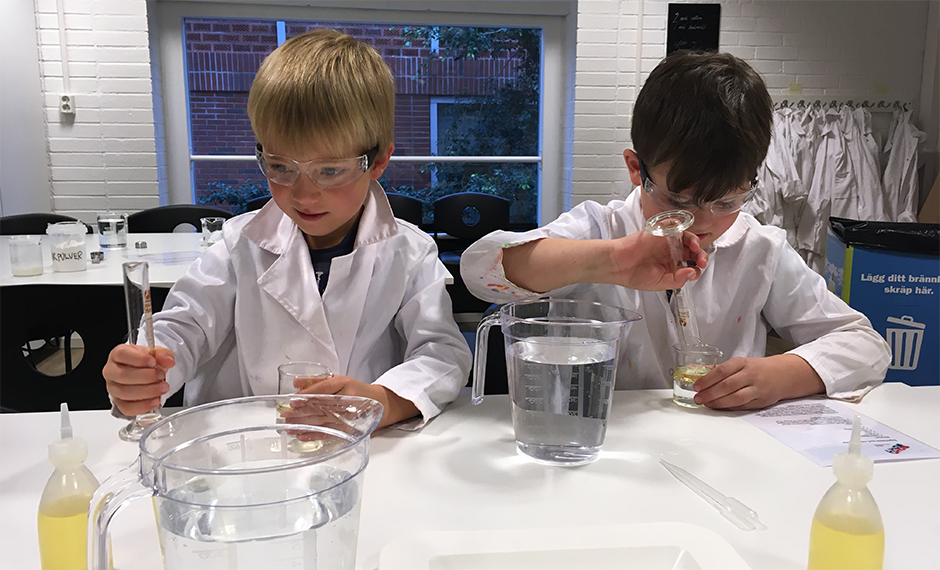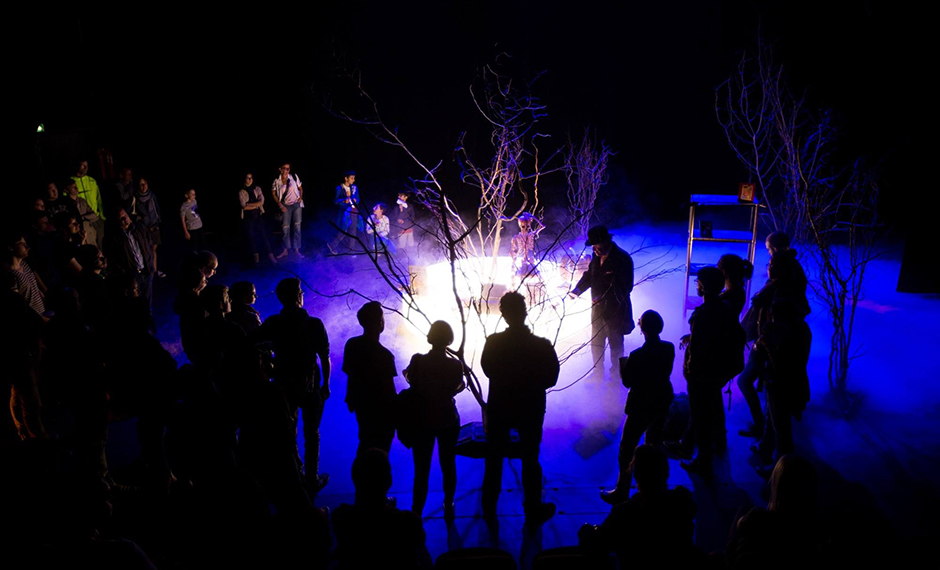On 29 September, thousands of researchers in 26 countries in Europe and beyond shared their passion for science at the annual European Researchers’ Night celebrations.

From cosy pubs and cafés to open city squares and shopping centres, Europe’s largest celebration of science allows the public to experience science in everyday settings and in fun and engaging ways. Here we take a look at just a few of the activities that were on offer in over 300 European cities on Friday 29 September.
Scotland: Solve a murder and join a torchlight tour
Known as Explorathon, Scotland’s Researchers’ Night was held in four cities and many different types of venues including pubs, museums, shopping centres and botanical gardens. Visitors could solve a murder and learn more about forensics at the National Museum of Scotland in Edinburgh or participate in a torchlight museum tour in St Andrews. In Aberdeen, the programme featured a pub quiz involving museum exhibits and a science café on how crude oil is turned into plastic bags. In addition to dozens of hands-on activities with researchers at Glasgow Science Centre, the public could also discover hidden patterns and ancient meanings within the names of Scotland’s cities and towns and explore the special collections at the University of Glasgow Library.
Malta: Street festival with art, music and theatre
In Malta, science spilled out into the warm evening at the annual Science in the City celebrations. The capital city Valletta was transformed with science-inspired art installations, exhibitions, music, live experiments, games and theatre all designed to engage ordinary people with research. This year highlights included Jazz for the Brain, an immersive music performance where each member of the audience sat next to a musician, and a hologram that brought the human body to life in 3D. Light Pushes Stuff allowed visitors to control kinetic lights using light from a torch and the Science Fair in the Parliament Square also proved popular with all ages.
France: Participatory Experiment in 12 cities

France’s activities took place in 12 cities around the overall theme imPOSSIBLES?, exploring amazing scientific breakthroughs as well as ethical questions around scientific progress. A Great Participatory Experiment run simultaneously in each of the cities by researchers in cognitive science investigated concepts around language and reasoning. Hundreds of visitors to European Researchers’ Night participated in the experiment generating data that can now be analysed and advance research in this area.
Oxford: I’m a Researcher, Get Me Out of Here
Curiosity Carnival provided an opportunity to showcase some of the world-leading research taking place in Oxford to a large and diverse audience. The programme included live experiments, debates, bite-sized talks, walking tours, pub quizzes and street activities. I’m a Researcher, Get Me Out of Here, was a live competition that challenged five researchers to answer science-related questions from the public in order to try to win the audience’s votes.
Estonia: 900 events across the country
Over 900 events were held in cities all across Estonia. This year’s programme focused on research ethics exploring questions such as how far can we go with human subject research and what are the ethical limitations of artificial intelligence. Other activities included a robot battle, outdoor cinema as well as teddy bear hospital for the youngest visitors.
Sweden: 400 activities in 28 cities
Back in Sweden, European Researchers’ Night activities were held in 28 cities across the country as part of ForskarFredag (Researchers’ Friday). Researchers participated in a wide range of activities for both young and old in venues such as museums, science centres, shopping centres, cafés and libraries, all with the aim of showing what they do and the relevance of their work to our everyday lives.
Skellefteå’s new science centre, Exploratoriet, offered after work activities, including a theatre show, experiments and talks. In Stockholm, the Science for Life laboratory opened its doors to visitors and the AlbaNova University Centre offered a programme of hands-on activities, physics shows, talks in small groups and challenges. Activities were also held for the first time on the island on Gotland, where visitors were shown advanced technical solutions to analyse sensitive historical artefacts and learned about the colours used 1,000 years ago to paint rune stones. In Halmstad, families could climb aboard the Science Safari experiment bus and in Piteå, its popular maker space workshops offered hands-on activities too. Five cities also held regional finals of the annual Researchers’ Grand Prix, a fast–paced and engaging contest in which researchers are challenged to present their research to a public audience in just four minutes.
As part of activities aimed at engaging young people in science, schools could “Borrow a researcher” to visit their school or undertake a class expedition to investigate a fictional planet in an educational game of scientific discovery. Secondary school pupils in Karlshamn were given a virtual guided tour of CERN and in Trollhättan pupils got to see high-tech robots in action during special guided tours of the Production Technology Centre.
A nation-wide drawing competition, designed to tackle stereotypes of scientists, challenged 6 to 12 year olds to draw a picture of a researcher. The drawings will now be analysed by researchers and compared with those from a similar competition in 2007 to discover whether children’s images of science and scientists have changed over the past 10 years.
”One of the aims of European Researchers’ Night is to inspire more young people to consider research as a career,” said Lena Söderström, the national coordinator of European Researchers’ Night in Sweden. “An important part of this is challenging stereotypes about who can become a scientist and what the work actually looks like. The face-to-face encounters and dialogues between researchers and visitors are central to this.”

